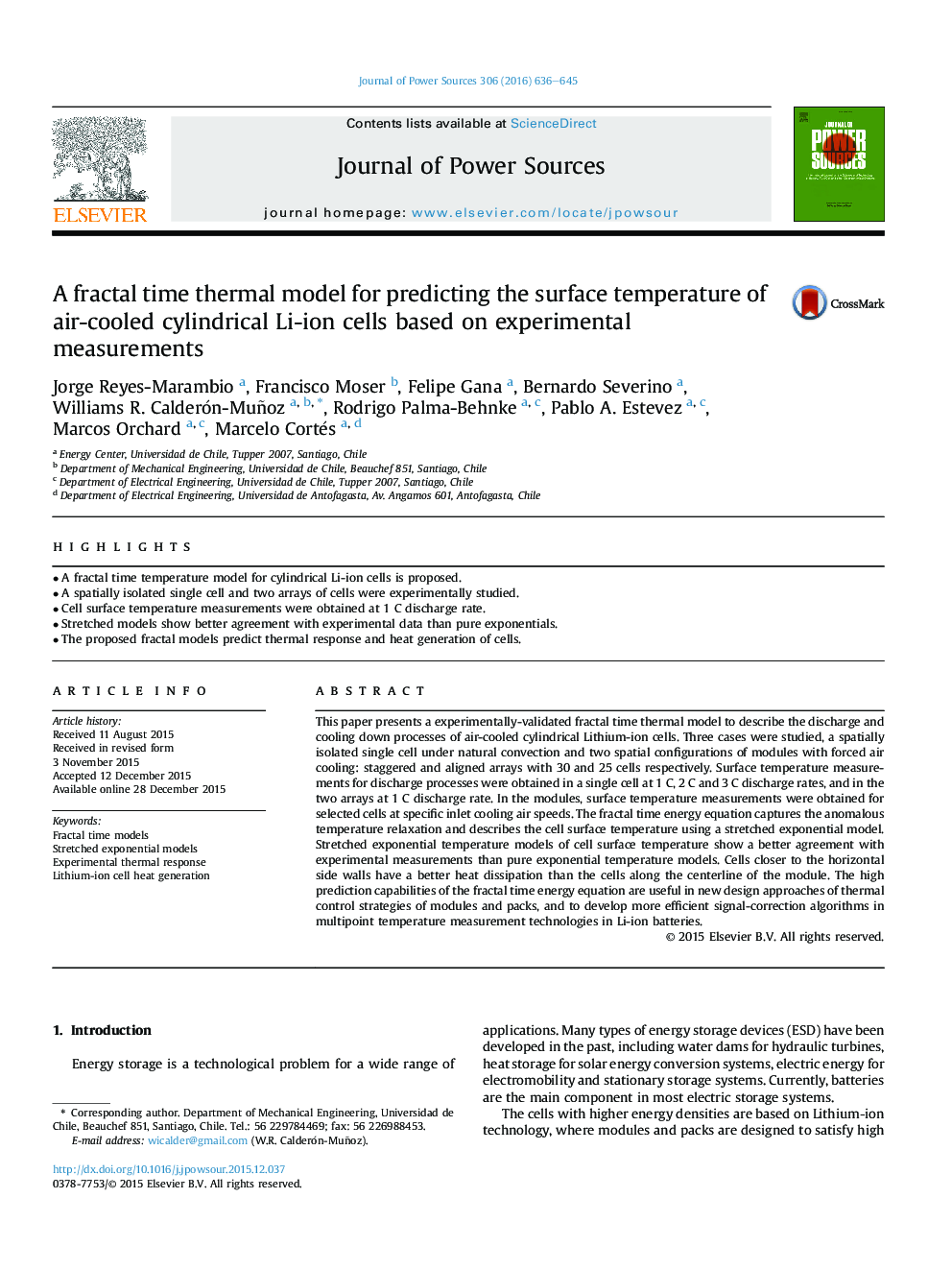| Article ID | Journal | Published Year | Pages | File Type |
|---|---|---|---|---|
| 1292402 | Journal of Power Sources | 2016 | 10 Pages |
•A fractal time temperature model for cylindrical Li-ion cells is proposed.•A spatially isolated single cell and two arrays of cells were experimentally studied.•Cell surface temperature measurements were obtained at 1 C discharge rate.•Stretched models show better agreement with experimental data than pure exponentials.•The proposed fractal models predict thermal response and heat generation of cells.
This paper presents a experimentally-validated fractal time thermal model to describe the discharge and cooling down processes of air-cooled cylindrical Lithium-ion cells. Three cases were studied, a spatially isolated single cell under natural convection and two spatial configurations of modules with forced air cooling: staggered and aligned arrays with 30 and 25 cells respectively. Surface temperature measurements for discharge processes were obtained in a single cell at 1 C, 2 C and 3 C discharge rates, and in the two arrays at 1 C discharge rate. In the modules, surface temperature measurements were obtained for selected cells at specific inlet cooling air speeds. The fractal time energy equation captures the anomalous temperature relaxation and describes the cell surface temperature using a stretched exponential model. Stretched exponential temperature models of cell surface temperature show a better agreement with experimental measurements than pure exponential temperature models. Cells closer to the horizontal side walls have a better heat dissipation than the cells along the centerline of the module. The high prediction capabilities of the fractal time energy equation are useful in new design approaches of thermal control strategies of modules and packs, and to develop more efficient signal-correction algorithms in multipoint temperature measurement technologies in Li-ion batteries.
